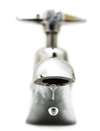« Previous 1 2
Tested – Tenable Nessus v6
SecurityX-Ray
Nessus is a network and vulnerability scanner for Windows, Linux, Unix, and Mac OS X computers. The software relies on the client/server principle; one Nessus server on the network runs nessusd, and the clients either connect locally or via a remote computer to this service. Security is ensured by SSL certificates and passwords.
When the server launches, the software automatically loads additional plugins if they are installed. With the help of these plugins, Nessus analyzes the operating systems, interfaces, services, and daemons on the network and returns the results to the server. Programmers develop these modules with Nessus' own Nessus Attack Scripting Language (NASL). The result of the check is a list of identified vulnerabilities and open ports, which Nessus discovers with the help of Nmap.
Although this arrangement sounds very much like open source, Nessus became a proprietary product by Tenable Network Security 10 years ago. Up to version 3.0, the product was released under the GPL, but this stopped in October 2005. To continue providing a free scanner, the open source project OpenVAS was formed; it builds on the last free version (2.2) of the scanner and has been developed independently ever since the fork.
Focus on Mobile Devices and Virtual Environments
At the end of November 2014, Tenable presented the current version 6 of the Vulnerability Management Platform and extended the software to include security features for mobile devices, virtualized environments, and cloud environments [1]. Nessus thus now offers more than 100 different policies for system hardening. The idea is for the scanner to find more vulnerabilities and malware out of the box than other scanning products and services currently on the market. Thanks to these immediately deployable templates, administrators can implement best practices
...Buy this article as PDF
(incl. VAT)




